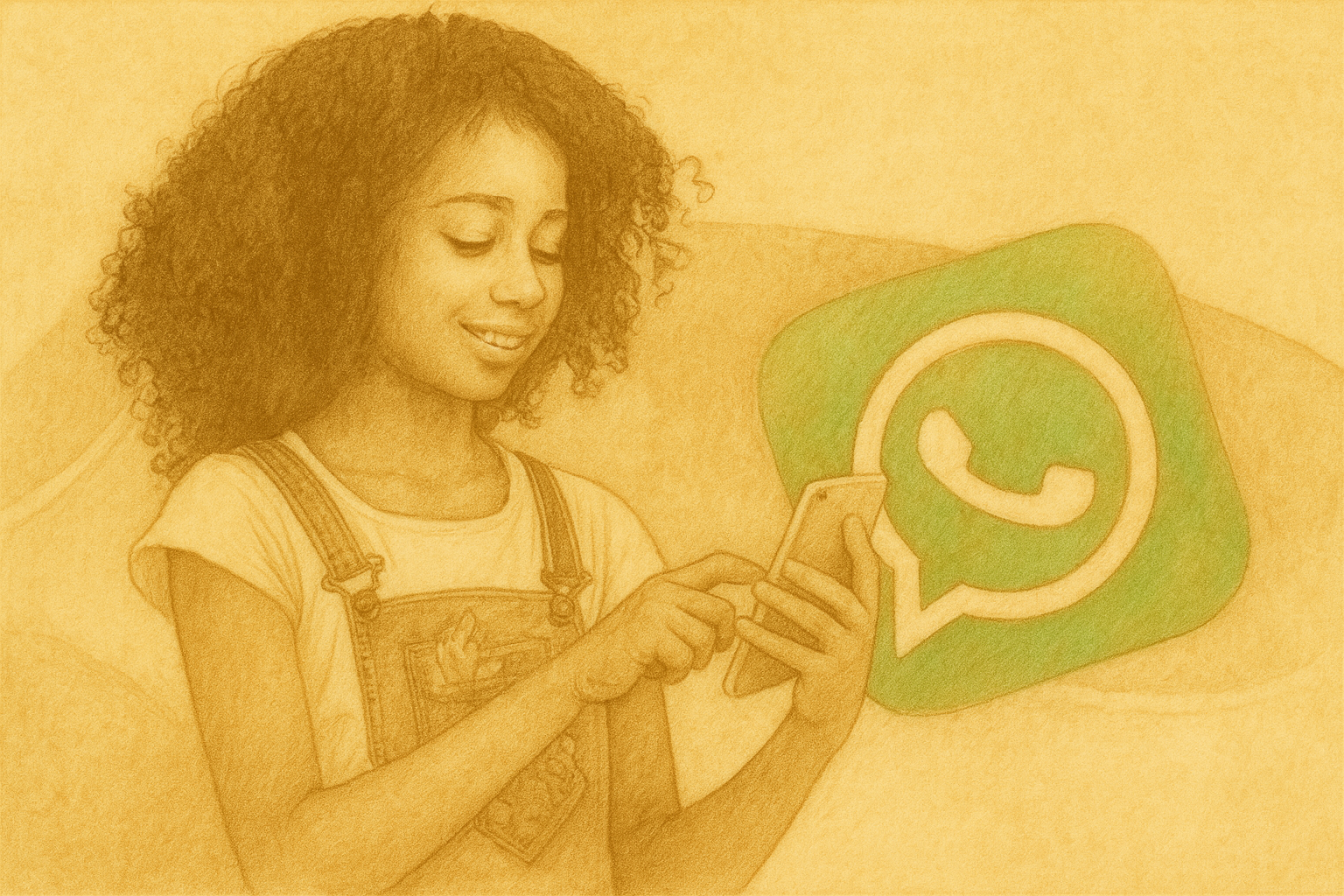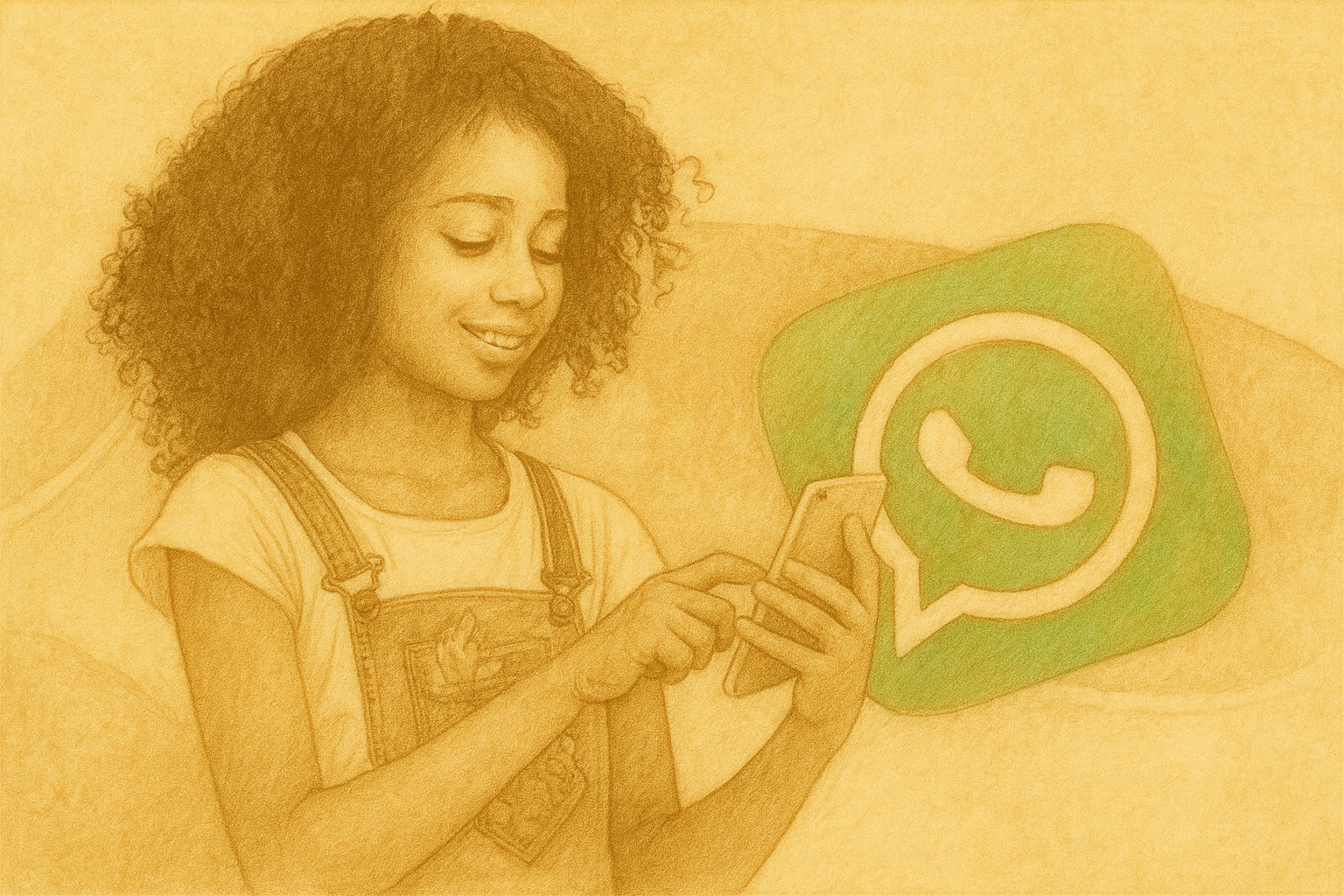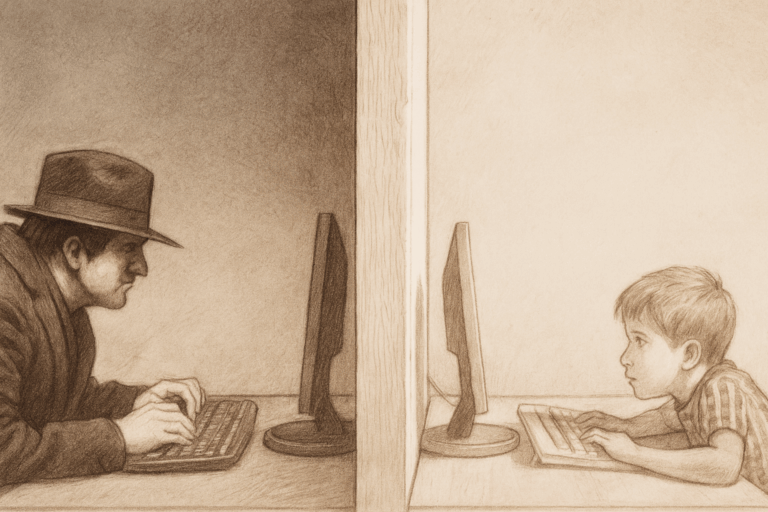WhatsApp – What Every Parent Should Know
WhatsApp: What Every Parent Should Know
A calm, practical guide from a parent who works in tech — explaining what WhatsApp really does, what to watch for, and how to make it safer for families.

What is WhatsApp?
WhatsApp is one of the most widely used messaging apps in the world. It’s where many children and teenagers chat with friends, share photos, and stay connected. On the surface it looks simple, but there’s a lot happening in the background that’s worth understanding. This guide explains the features, settings, and small changes that can make WhatsApp a safer space for families.
Minimum age and sign-up
- Minimum age (UK and EU): 16. Many younger children still join, but this is WhatsApp’s official policy.
- What you need: a mobile phone number — not an email address. WhatsApp verifies the number by sending a text message with a code.
- Contacts: when setting up, WhatsApp asks to access your phone’s contact list to find other users. Your phone number becomes your WhatsApp identity.
Groups and Communities
Groups are where most day-to-day chatting happens, and they can be large — up to 1,000 members. If someone has your phone number, they can usually add you or your child to a group without asking first, unless privacy settings are changed.
To limit who can add you to groups:
- Open WhatsApp and go to Settings.
- Select Privacy and then Groups.
- Choose My Contacts or My Contacts Except… to stop unknown people from adding you.
Communities are a newer feature that link several groups together — often used by schools or clubs. They can be useful but make it harder to see where messages are coming from, so it’s worth reviewing who can add your child and leaving any groups that don’t feel right.
Photos, videos and disappearing messages
- View Once photos and videos disappear after being opened, but anyone can still take a screenshot or photo of the screen.
- Disappearing messages automatically delete after a set period (24 hours, 7 days or 90 days). They tidy up chats but don’t prevent someone from saving or forwarding content before it disappears.
- It helps to agree a simple rule at home: if you wouldn’t want a teacher or grandparent to see it, don’t send it.
Stop media saving to the camera roll
By default, WhatsApp automatically saves photos and videos from chats to your phone’s gallery. That means an image from a group chat — even one you didn’t open — might appear in your camera roll. It’s best to turn this off.
- Open WhatsApp → Settings → Storage and Data → Media Auto-Download.
- Set all options to Never (or Wi-Fi only, if you prefer).
- On iPhone, also go to WhatsApp → Settings → Chats and turn off Save to Camera Roll.
Privacy settings worth checking
- Last Seen and Online: Settings → Privacy → Last Seen & Online → set to My Contacts or Nobody.
- Profile Photo: Settings → Privacy → Profile Photo → My Contacts.
- About and Status: limit to My Contacts.
- Read Receipts: you can turn these off if your child feels pressured to reply straight away.
- Live Location: always keep off unless there’s a specific, temporary reason to share it.
Add a layer of account protection
It’s a good idea to turn on two-step verification. This means that even if someone gets hold of the verification code, they can’t log in without a PIN.
- Open WhatsApp → Settings → Account → Two-step verification → Enable.
- Choose a memorable 6-digit PIN and add a recovery email address (a parent’s address works best for a child’s phone).
Reporting, blocking and leaving groups
- To block or report someone: open the chat, tap their name or number, then select Block or Report.
- To leave a group: open the group, tap its name, and select Exit Group. You can also Mute a group if it’s too busy.
- If anything concerning happens, take a screenshot or save the messages before leaving the chat so you can show them to the school or, in serious cases, the police.
Start with a conversation, not a checklist
Settings are important, but honest conversation makes the biggest difference. Talk about who your child chats to, what they share, and what to do if something feels uncomfortable. Reassure them that they can come to you — and that it’s okay if they’ve already seen or shared something they wish they hadn’t. You’re there to help, not to judge.
Quick checklist
- Limit who can add to groups.
- Turn off Save to Camera Roll and set media auto-download to Never.
- Set Profile Photo and Last Seen to My Contacts.
- Disable Live Location.
- Enable two-step verification.







